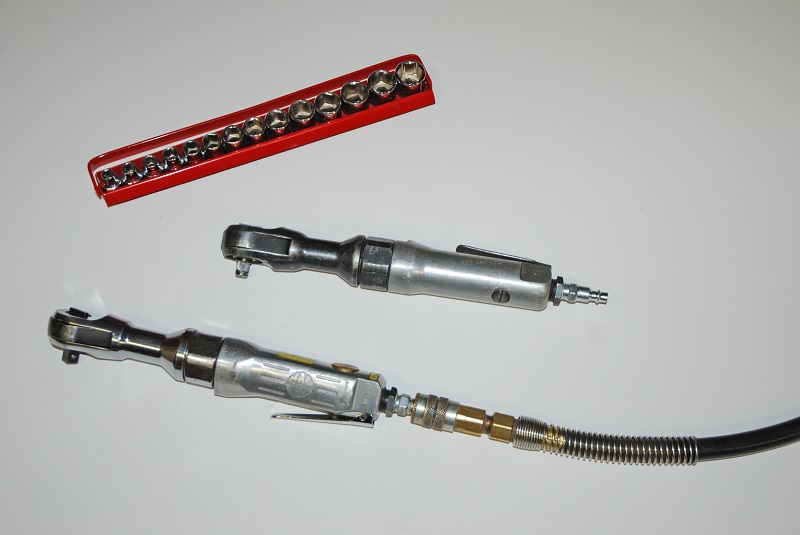
(Image/Wayne Scraba)
At one time, air ratchets were few and far between, particularly among everyday enthusiasts.
They were pricey and mostly reserved for pro mechanics. That has definitely changed over the years.
Today, there are many air ratchets to choose from in different price ranges.
Yes, you can buy a $200+ air ratchet, but there are plenty of middle-of-the-road choices that work great priced in the $100 range.
But let’s rewind for a second: Not everyone really needs an air ratchet.
Air ratchets are tools that speed up shop output. Case-in-point are the fasteners used to affix something like a front sway bar. With some cars, you’ll be under there for a long time manually cranking on a conventional ratchet (even longer with an open end wrench) because of all the threads. An air ratchet makes that tedious job easier, speeding it up which allows more time to invest in more intricate work.
The next consideration is this: Most standard 3/8-inch air ratchets are capable of applying about 30-50 foot-pounds of torque. That might not be sufficient to crack open (or seriously tighten) many fasteners. Yes, you can get a high-torque air ratchet, but the cost goes up when you do (sometimes exponentially).
If you have an impact wrench, then the need for a high-torque ratchet goes down and often there is no need for it at all. You simply use the impact for high-torque jobs.
Speaking of drives: You can buy air ratchets in 1/4-inch, 3/8-inch, and 1/2-inch drives.
- 1/4-inch drive air ratchets are best reserved for low-duty tasks.
- A 3/8-inch drive air ratchet works for the majority of light to medium duty tasks on a car.
- Finally, a 1/2-inch-drive air ratchet delivers the performance required for heavy-duty tasks.
When you consider the majority of the fasteners used in a racecar, hot rod, or production line car, and consider the torque needs, the 3/8-inch drive setup is the most common.
The size and output of your compressor will affect the performance of an air ratchet.
For example, most common 3/8-inch drive air ratchets consume 3 to 4.5 cfm of air and mandate 90 psi (constant). Many also require a 3/8-inch minimum line size and are usually equipped with a 1/4-inch NPT thread for the quick-coupler fitting.
Some small 110-volt portable compressors will struggle to keep up because of this. For a shop environment with a capable 220 (240) volt two-stage air compressor (as shown in the accompanying photos), powering an air ratchet or two simultaneously isn’t an issue.
Once you choose an air ratchet that fits your needs, consider the size along with the weight.
A big, heavy tool just isn’t comfortable after sustained use. But on the other hand, a flyweight air ratchet can be troublesome (some mechanics call them “wrist breakers”).
For a point of reference, the pair of 3/8-inch drive Mac tools air ratchets shown in the accompanying photos weigh 1,200 grams each (2.65 pounds each).
They measure 10.25-inches from end to end plus the quick coupler fitting. The overall length works out to approximately 12 inches. Personally, I find these air ratchet dimensions perfect for what I’ve done in the shop (drag race cars, hot rods, street-strip cars and restorations along with motorcycle work).
Another consideration is noise.
Having something like a big air compressor pounding away in the background is one thing, but some air ratchets can really step up the wail. For example, my Mac air ratchets are in the range of 89-90 decibels at full bark (many of the examples at Summit Racing produce similar noise). From our perspective, that’s acceptable since the use isn’t constant (although eight hours straight at 90 db. can contribute to hearing damage).
All air tools benefit from the use of an in-line oiler installed on the air supply line since it increases tool life and keeps the tool oiled under sustained use. The in-line oiler should be regularly checked and filled with air-tool oil.
You can check the adjustment of an in-line oiler by placing a sheet of paper next to the air ratchet exhaust port. Hold the throttle open for approximately 30 seconds. A properly set in-line oiler will show a light stain of oil collected on the paper. Too much oil isn’t good.
If you have to store the air ratchet for an extended period of time, it should receive a generous amount of lubrication at that time (simply oil through the quick coupler fitting).
The ratchet should be run for approximately 30 seconds to ensure oil has been evenly distributed throughout the tool. And the ratchet should always be stored in a clean, dry environment.
As far as recommended oil is concerned, air tool oil is preferred, but in truth many pros are now using Marvel Mystery Air Tool Oil. It works!
It’s easy to see that an air-powered ratchet (or two) can really speed up your productivity in the shop. There are tools for every budget and every application.
Pick carefully and you’ll end up with a piece of equipment that will quickly become one of your “go-to” favorite shop tools. They are, after all, a big-time time saver!
For a closer look, check out the following photos:
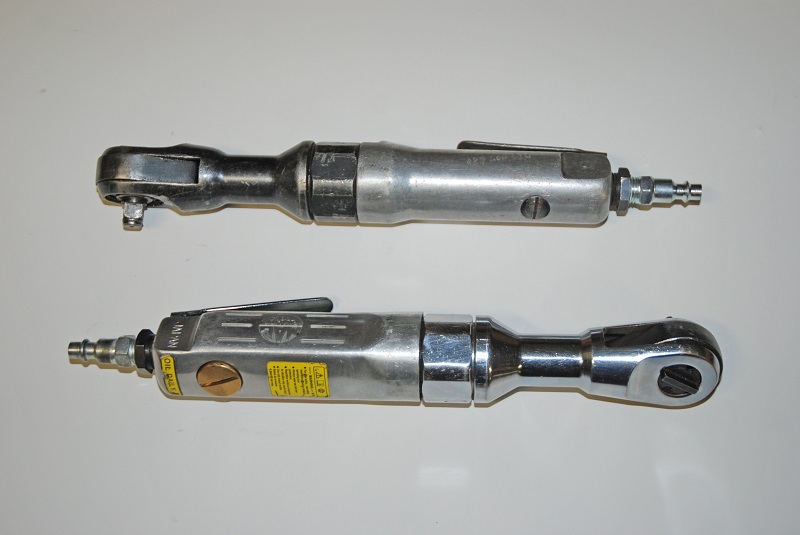
This is one of my favorite go-to shop tools: A pair of 3/8-inch drive air ratchets. As you can see, one is well used and the other is on it’s way to becoming well used. The reason for this is simple: They’re big time, time savers! (Image/Wayne Scraba)
…
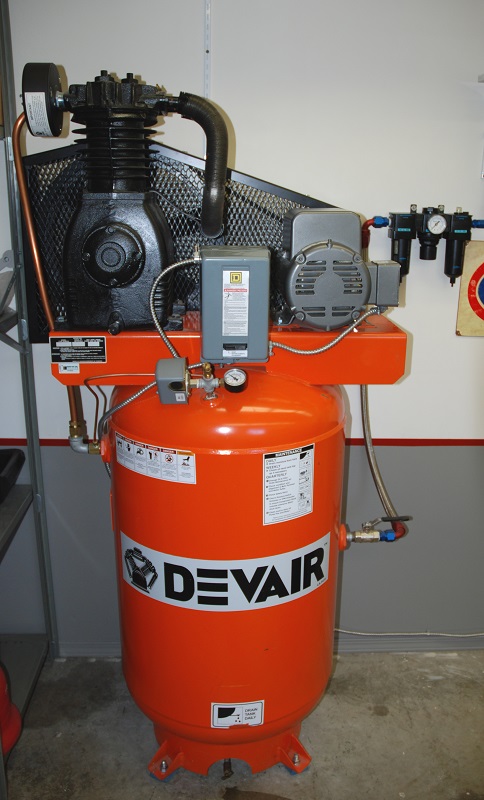
No matter what type of air tools you have (or desire), just be sure your air compressor is up to the task. A typical 3/8-inch air ratchet will mandate approximately 3-4 cfm of air at a constant 90 psi. (Image/Wayne Scraba)
…
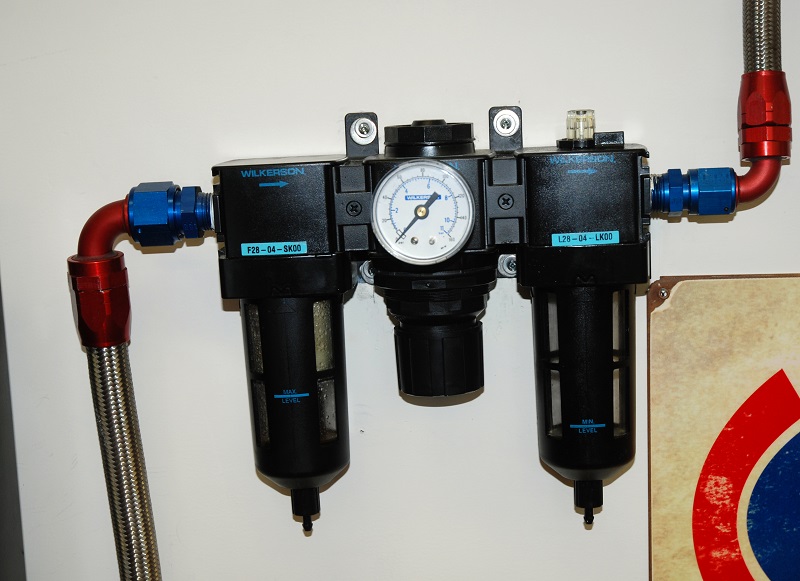
An inline oiler is something you should consider if air tools are regularly used in your shop. This setup also has a water trap. (Image/Wayne Scraba)
…
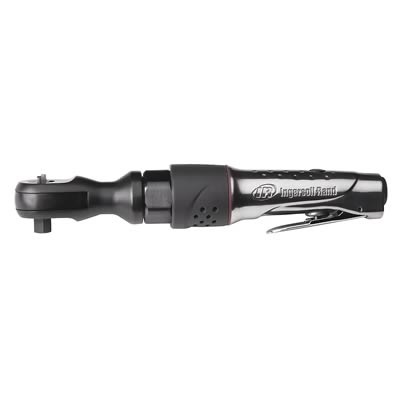
This Ingersoll Rand 3/8-inch drive air ratchet won’t break the bank, but it has great power (54 foot-pound torque capacity). It consumes 4-cfm of air and is relatively compact. Part number is IRC-107XPA. (Image/Summit Racing)
…
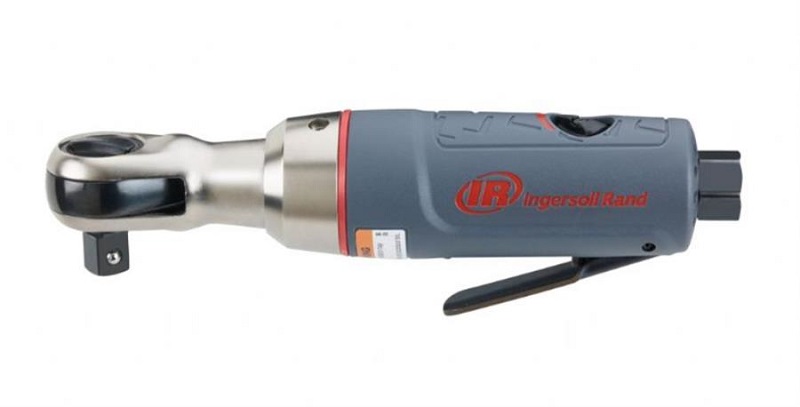
Here’s a small high torque 3/8-inch drive air ratchet from Ingersoll Rand. It packs a lot of torque from a compact package, producing a whopping 65 foot-pounds of torque. Summit Racing offers this example under part number IRC-1207MAX-D3. (Image/Summit Racing)
…

Chicago Pneumatic (part number CGP-CP7830Q) from the Summit Racing catalog is a pro series 3/8-inch drive air ratchet. They’re quiet and have an ergonomic plastic handle. It consumes 3.75 CFM. This is a top line tool. (Image/Summit Racing)
…
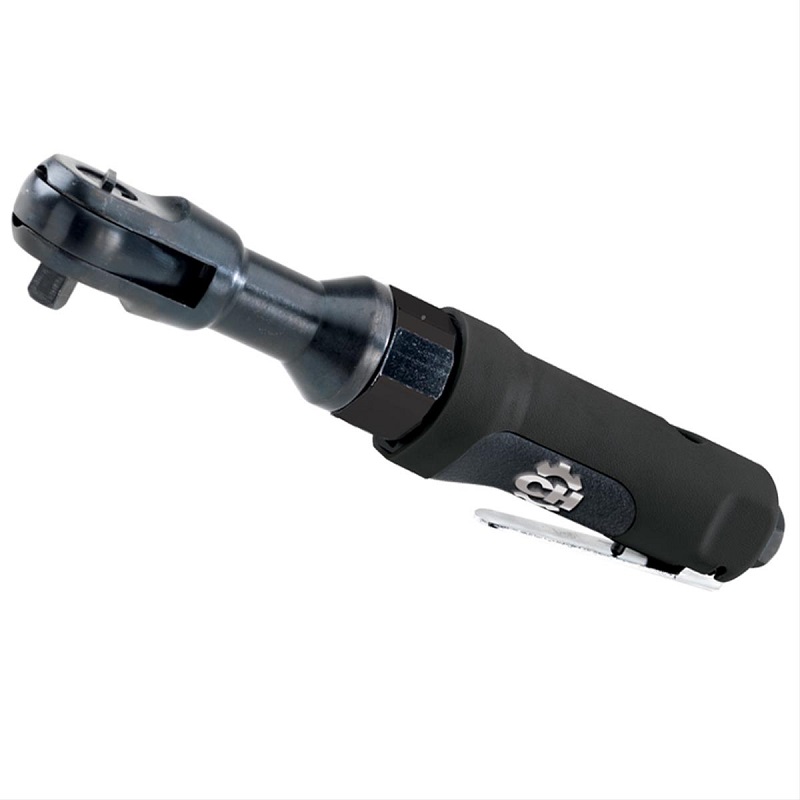
The Campbell Hausfeld CL150100AV is an inexpensive option when it comes to air powered ratchets. Like the others shown it’s a 3/8-inch drive example, and from Summit Racing the price is just over $60. (Image/Summit Racing)
…
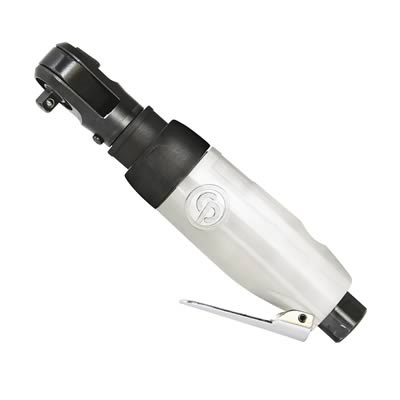
If you’re looking for a very compact 1/4-inch drive air ratchet, check out this example from Chicago Pneumatic.It’s available from Summit Racing under part number 8941078232. This air ratchet only weighs 1.13 pounds and measures 7-3/4-inches in length. It can produce upwards of 12.5-foot-pounds of torque. (Image/Summit Racing)

Good Article! I have several air ratchets that have served me well over the years. I have a Snap On that’s low torque, but higher speed that’s good for assembly work, and then you torque by hand. My original Rodac from the late 70s still cranks it out. It’s a higher torque unit like most 3/8 drive units. Yet most all units suffer from the same problem, knuckle busting! That point where the fastener stops and the ratchet slams your hand into some metal in the neighborhood. The more experienced you are, the better you plan for the result, and how you handle it. Whoa Nelly, now Harbor Freight has a Impact Rachet! Better nut busting torque of an impact, and No busted knuckles tightening Fastners! I love it! Your hands will thank you!
For 20+ years I’ve used an Ingersoll Rand 3/8″ air ratchet — one that’s so old it was probably made in the USA! But recently I bought an I.R. 1/4″ air ratchet, which is great for tight spaces. Along with the shorter 1/4″ drive sockets, it can take over once you break the hidden bolt loose with a box/open end wench. That surely beats using the wrench one flat at a time. A mechanic buddy of mine even has a 1/4″ drive 5/8″ spark plug socket that lets him get into places where he can’t with 3/8″ stuff. I once watched him remove 8 spark plugs using that socket, extensions, and a 1/4″ air impact wrench.
I bought some air archers from Sears when I worked there in the late 60s. Not very torque, but efficient and still work 50 years later.
Do you sell Air Ratchet if yes email me with the models for me to select one and proceed.
Which is a suitable ratchet wrench for M36 bolts